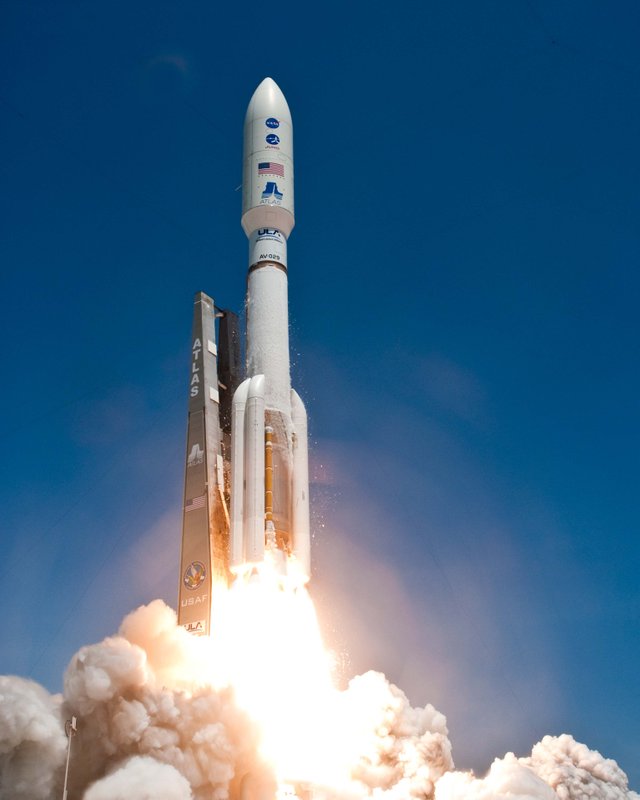Learning energy and impulse in 2d physics - basic physics- part four
Energy is one of the most important ideas in physics while impulse is important to know as well.
part one part three

( source)
Impulse is force over time
It is mainly used to find the change in momentum. This is important because it does not need the mass or velocity of the object. This isn't used very often but situations do exist where it is needed.
F/t = change in momentum
For example, two objects are moving in the same direction at the same speed. One gets a force of 10 newtons for 10 seconds and hits the other one, giving it all of the extra momentum in a perfectly elastic collision. It would not stop and release all of the momentum. The object would only change based on the difference between them, which is 10 seconds times 10 newtons or a 100 kgm/s change. This is not the most helpful but it can be used in many situations
Work and energy are some of the most powerful tools
You can not physically see them or feel them like velocity or force but you can tell it is there through mathematics.
Work and energy are the same thing but each name is used in different situations, people will understand you either way so it doesn't matter.
Work is force times distance
Work is simply how much force you have on an object total. It can never be lost, just transferred from one thing to another. This is one of the most important aspects in physics.
Energy is measured in a joule which is a newton meter or kgm^2/s^2.
You find energy in a few different forms kinetic energy (the energy of motion), potential energy (the ability to be able to apply force and move something) or matter. Matter itself is energy which I will not get into right now. Heat for example is just really kinetic energy in many directions near the molecular level.
How to find kinetic energy
The symbol for kinetic energy is u(k) and the equation is u(k) = 1/2 mv^2 (m stands for mass in this one). What does this equation mean? Well it is simply the average force it can exert, 1/2 is the difference between the maximum and the minimum of 0. This equation is important but on its own is not super useful.
Potential energy
Potential energy is simply an object in a state where it could gain more energy from the environment. For example anything on a high shelf could fall down and that would give it energy.
Gravity has an extremely complex equation for potential energy that I doubt you would understand:
gravitational potential energy = mass * height * gravity

( source)
If the distance is short enough and the object is large enough you can pretend gravity doesn't change. That makes this equation even easier to use because we don't have to do calculus.
We can use this to find the speed of an object that just fell as long as we know the height, mass of the object and the gravity. On earth we assume the gravity is 9.81 (or 10 if you don't have a calculator). That means we only need the mass of the object and height to find out its speed, Or do we?
Watch this magic
Mgh = 1/2 mv^2
(mass gravity height) = (1/2 mass velocity squared)
Mass is on both sides this means....
gh = 1/2v^2
We know that gravity so if we have the height we can find the speed of an object after a fall. We can do this because the potential energy turns into kinetic energy during the fall. (Assuming none is lost due to friction or air resistance.)
For example if an object starts falling at 10 meters it would hit the root of 50 meter per second.
We have learned a lot of equations let's see what we can do with them
For example an object with a mass of 2kg kilogram is falling off a building. A kid who is one meter tall wants to know if it was possible for him to safely catch it. He measures the building at 25 meters.
The object falls for 23 meters so it is going (23 * 10 * 2 = v^2 v=22 meters/ second) 22 meters a second when it reaches him. To slow it down over the course of one and a half meters (holding hand up) it would need to be the deceleration of 14.6 meters a second squared. This means the force required is 2kg * 14.6 m/s^2 or 29.2 N. Most children would be able to catch this without too much difficulty. We were able to figure this out simply by knowing the height and mass of the object and kid.

( source )
Let's try one that's a little more complex.
We have a firework with 200 joules of potential energy in the launch mechanism and 100 joules in the explosion. It weighs 100 grams throughout the whole thing.
It is pointed up at a 75 degree angle and launches up. We assume that it burns uniformly.
At the end kinetic energy plus gravitational potential will be equal to chemical potential.
mgh +1/2 m v^2 = 200j
All velocity will be horizontal so we multiply it by cos(angle)
mgh +1/2m (v cos(75))^2 = 200j
mgh +0.0676v^2/2 * m = 200j
(Take out the mass)
gh + 0.0676 v^2 /2 = 2000
(take out gravity using 10)
h + 0.0676 v^2/20 = 200
h = 200 - 0.0676v^2/20
Now we can use substitution.
mg(200 - 0.26v^2/20) + 1/2m * 0.0676v^2 = 200j
(take out mg and 200)
0.26v^2/20 +5 * 0.0676v^2 =1800
(to shorten this up for you)
v =33m/s
u(k) = 1/2 m v^2
u(k) = 53j
The hardest part is over!
mgh + 53j = 200j
mgh = 137
h = 137 m
It goes 137 meters into the air at its peak and is going 33 m/s
But now what happens when it explodes? Remember the force was 100j
The rocket splits off into 3 parts two are 25 grams one is 50.
The total momentum must be equal.
We can figure out how fast each one can go max.
100j can't go into one, it must be split between them keeping the momentum the same.
Since they were all going 33 m/s we can assume that is 0 for now to make it easier. V now becomes change in velocity.
1/2 mv^2 + 1/2mv^2 + 1/2mv^2 = 100j
0.25v^2 + 0.25v^2 + 0.5v^2 = 200
We can even simplify it further
v^2 + v^2 +2v^2 = 800
The speeds of the two smaller ones must be equal and opposite to the speed of the 50 gram piece.
That means they must go in the same direction.
2v^2 +2v^2 = 800
v^2 = 200
v = 14 m/s + the 33 m/s from the rocket
47 m/s
The fastest the big one can go is 47 m/s.
How hard does it hit the ground?
Well we could easily figure that out.
1/2 mv^2 + mgh = u(k)
1/2 * 0.05 (47)^2 + 0.05 * 10 * 137 = u(k)
55.2 + 68 = u(k)
it would hit the ground with 123.2 joules of kinetic energy.
( source
units used
distance = meter = m
mass = kilogram = kg
time = seconds = s
velocity = m/s
acceleration = m/s^2
impulse = change in momentum = kg m/s
force = newton =n = kgm/s^2
energy = joule = j = kgm^2/s^2
Hope you enjoyed.
Tell me in comments which one you like the math heavy or the conceptual heavy ones.
Subscribe for more learning life on other worlds up next.
coming soon:
Power and electricity
Dear @anarchyhasnogods,
Your post has been selected by the @robinhoodwhale initiative as one of our top picks for curation today.
Learn more about the Robinhood Whale here!
The Steemit community looks forward to more amazing blogs from you. So, please keep on Steeming!
Goodluck!
~RHW~